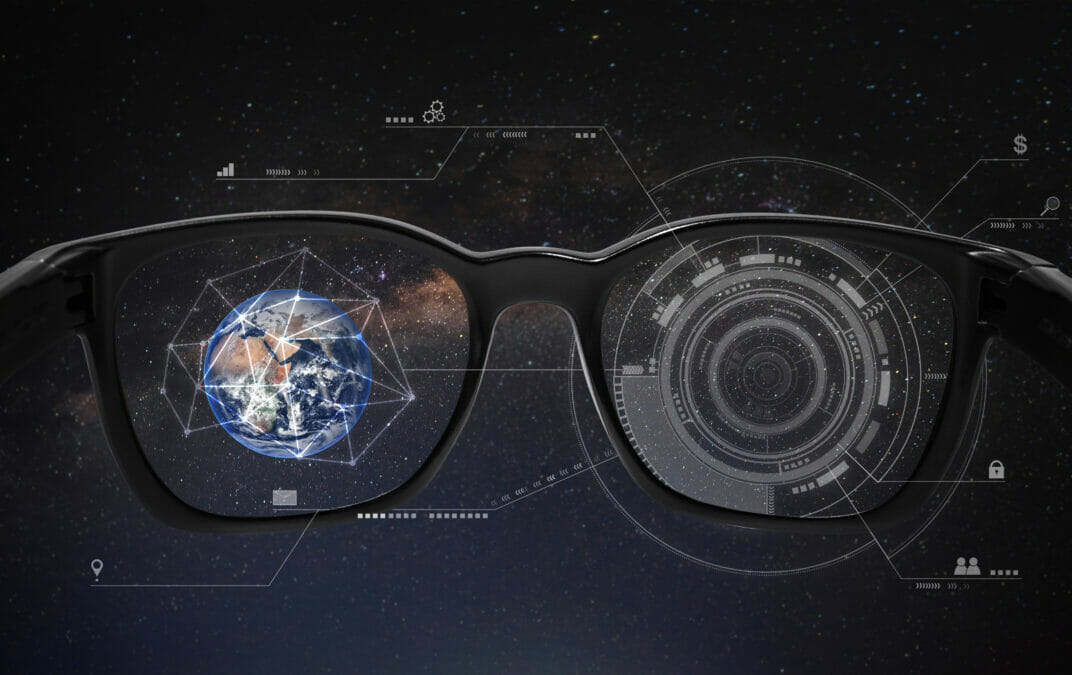The full potential of assisted/augmented reality (AR) and artificial intelligence (AI) in the workplace has been a key business topic for some time. Companies across industries have for years, been successfully deploying various AI and AR solutions, in particular for customer service and support. Recently, McKinsey found that organisations have increased investment in AI technologies in each major business function in response to the pandemic, and Gartner predicts that more will do so as we enter 2022. In fact, the global AR market size is expected to expand at a compound annual growth rate (CAGR) of 43.8% from 2021 to 2028.
These developments have been on an upward swing for some time. However, in 2019, despite mounting enthusiasm for AI and AR solutions, widespread adoption was still beyond the horizon – then COVID-19 hit. With travel all but impossible, remote work a necessity, and budgets squeezed, many organisations found themselves in crisis mode.
‘Doing things differently’ was the mantra for 2020 – and doing things differently is daunting at the best of times. However, over the last 18 months, we have seen that as companies implemented new digital approaches to get work done, the real-life benefits of these changes emerged. Even after the pandemic runs its course, it’s likely many companies won’t want to revert to old methods. Reality has changed irrevocably, and with it, the advantages of implementing AI and AR solutions have gone from being merely aspirational to almost essential. Because these technologies do one thing really well – they enable efficiency in an age of disruption.
10 innovative AR and VR companies to watch
What are they?
Let’s take a look at the technologies in turn. Assisted and augmented reality (AR) are often used interchangeably, but they do differ in some key ways. Assisted reality, unlike augmented reality, doesn’t change what the user is seeing. Rather, it adds an extra layer of information into their peripheral vision. Assisted reality can be in the form of something like smart glasses, while augmented reality would often completely obstruct your view of what is actually around you. Indeed, smart glasses are one of the top applications for assisted reality, with adoption not only anticipated to grow in the coming years, but also to accelerate as spending starts to transition away from mobile AR and towards head-worn AR.
AI on the other hand, has the potential to completely transform workplace design. Its growth is happening just as quickly globally and being such a significant enabler for the next wave of technologies, this growth is likely to become exponential. Today, almost three-quarters of organisations say they will invest in AI in the next three years to create new business models for new technologies such as automation and edge computing devices. Even post-pandemic, many businesses believe they risk going out of business if they don’t scale AI in the next five years.
What does this mean for business?
The rising demand for remote assistance is driving a lot of this growth. Businesses are also using AR-based apps for tracking, identifying, and resolving technical issues as well as for tasks, such as retrofitting, assembling, manufacturing, and repairing production lines. The AI market is not only anticipated to help the development of enterprise, it is also believed that the technology can also help to achieve business growth objectives and generate value. Nine out of 10 C-suite executives believe they must leverage AI to achieve their growth objectives.
AR assistance also provides numerous benefits, including a reduction in time in interpreting instructions, reduction in training time and increase in productivity. Manufacturers in particular, cite the use of smart glasses as a key driver of these advantages. Our own research found that 63% of organisations are likely to deploy smart glasses within the next three years, with 47% doing it for improved mobile working, 34% for improved data capture /processing and 39% for improved sharing / collaboration. Indeed, Gartner predicts that by 2026, 75% of capital-equipment-intensive industries will use AR as a key component for cost reduction/avoidance among frontline workers. An AR-Assisted Assembly use case achieved the following results using AR in aerospace assembly:
- 90% to 99% reduction in time interpreting instructions (“time to information”);
- 85% reduction in training time;
- 40% increase in productivity;
- 35% to 50% reduction in overall technician time.
Driving value from immersive technologies
Challenges…
The challenge of deploying evolving technologies, is always that until they have fully matured, integration can be a challenge. With smart glasses as well, there can also be security and privacy concerns. In medical and surgical settings for example, the use of cameras in operation rooms is very sensitive and controversial. For sensitive scenarios like these, the use of such devices must be agreed and understood to be for the benefit of all beforehand. While AI is a more developed technology, it is also costly, and may require a strong upfront investment. Finally, AI can be hard to scale up and down. Gartner found CIOs and IT leaders are finding it difficult to scale AI projects, with only 53% of projects making it from prototypes of production as they lack the right tools to create a production-grade AI pipeline.
…But not setbacks
However, these problems are likely to be minor blips at best. It doesn’t mean deployment is impossible or even difficult. Firstly, investments are a necessary part of business growth, and most business leaders agree that AI and AR promise excellent investment returns after only a short period of time – when deployed correctly.
Secondly, AI, AR and devices like smart glasses have grown far faster in the enterprise sector than the consumer space. Traditionally, devices that gain popularity through business use (rather than consumer) are always a little slower to take off. While global spending on AR and VR headsets, software, and services, including purchases by consumers, rose to $12 billion in 2020, the majority of this growth was in the business sector. As it slowly starts to become more popular with consumers too, this trend is likely to pick up speed. With the pandemic accelerating the opportunity to demonstrate their value, AR and smart glasses may continue to gain ground thanks to their promise of lower costs, greater safety, and better learning retention. Growth doesn’t need to be immediate in order to be recognised.











